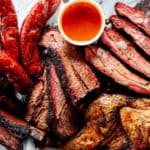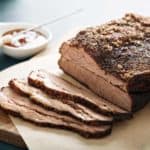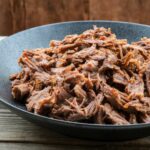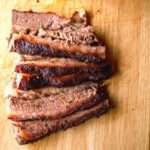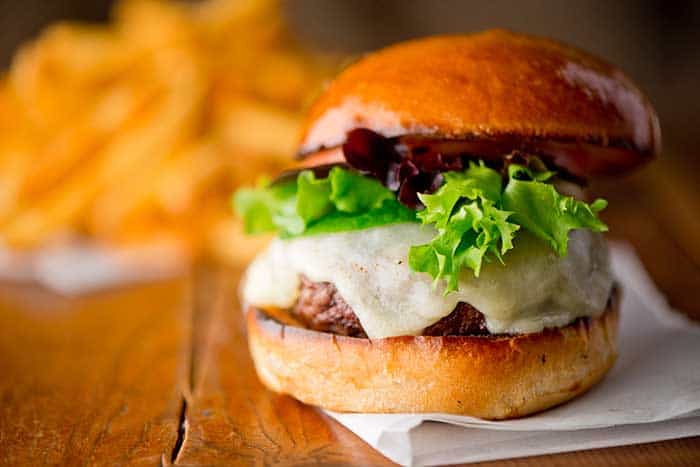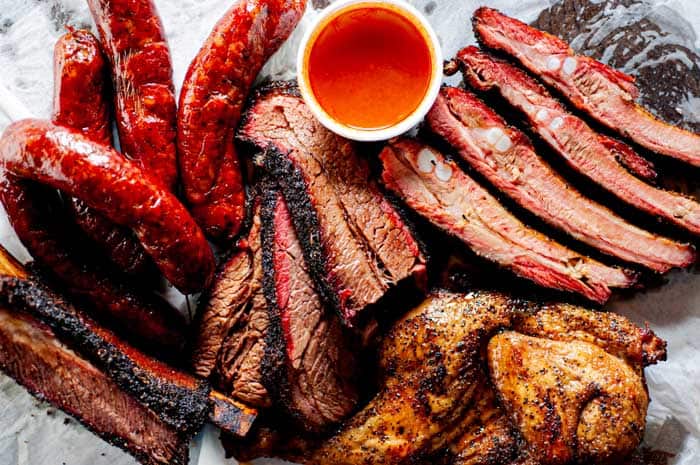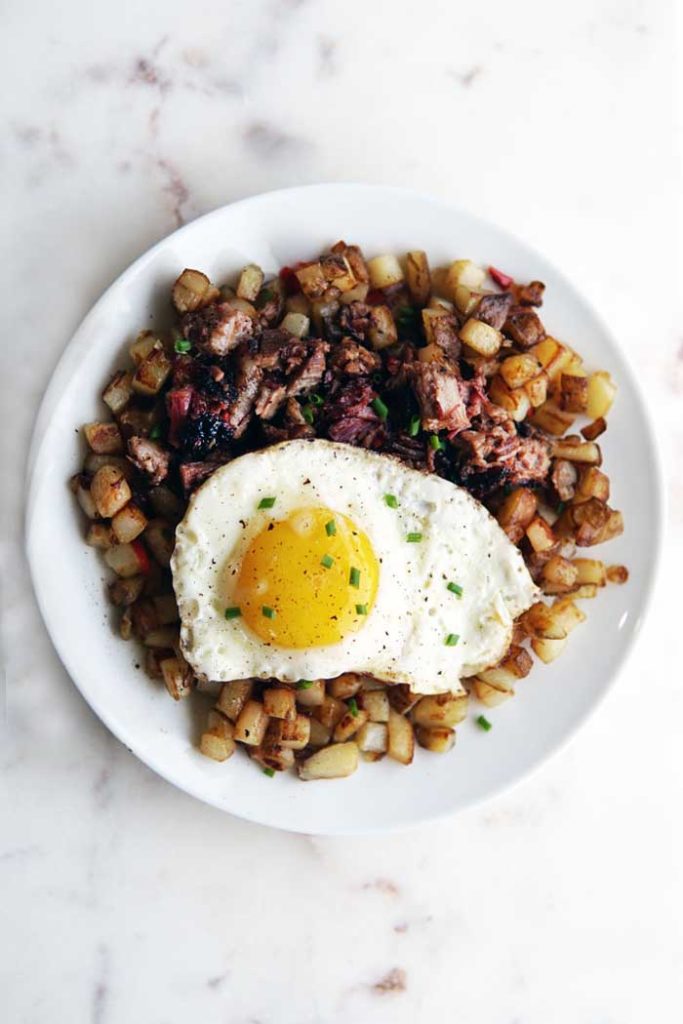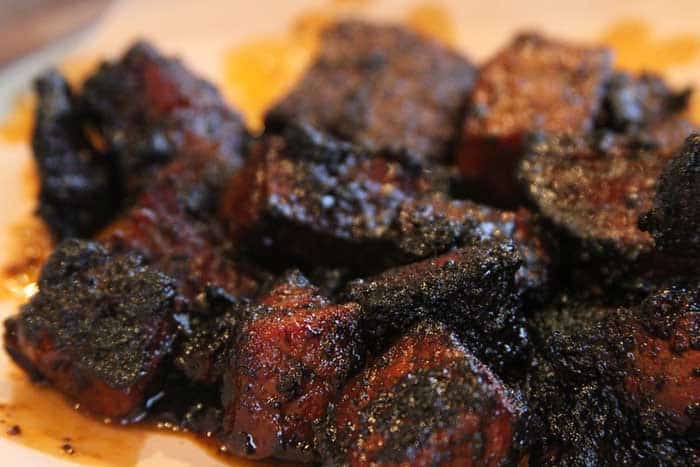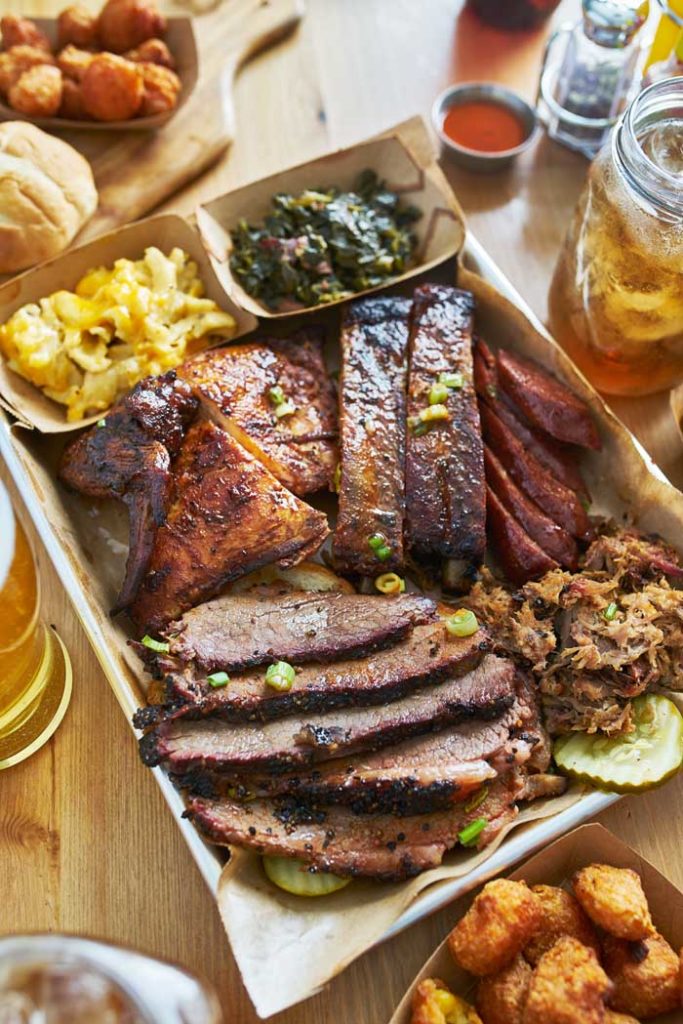Wrapping brisket is one of the most effective ways to elevate your barbecue smoked beef. Discover why the BBQ technique works and how to wrap brisket with our easy smoking guide.
![When to Wrap Brisket [BBQ Tip]](https://theonlinegrill.com/wp-content/uploads/2020/02/When-to-wrap-brisket-683x1024.jpg)
If you’re only going to master one staple BBQ meat, it has to be brisket.
Not only is it steeped in a rich history of American barbecue, but it’s also notoriously difficult to master. And for that reason, it’s allowed anyone who can smoke a mean cut of brisket to have the bragging rights around the firepit.
One of the things that makes it so difficult to get to grips with is that it can be a struggle to bring it to temperature while also preventing it from going dry.
One of the ways that we can get around this is by wrapping it.
But when should we wrap brisket? At what temperature? And what with?
Today we’re going to take a look at everything you need to know so that you can cook the best brisket in town.
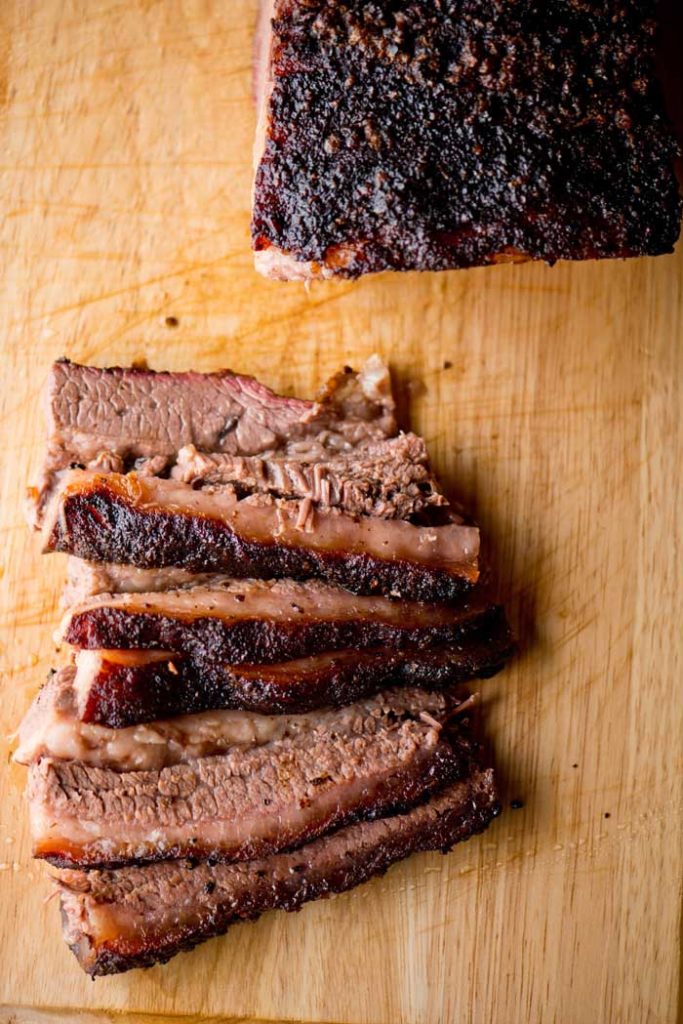
Why Should You Wrap Brisket?
Many pitmasters wrap their briskets but might be stumped if you ask them exactly why they do it.
It’s in a long tradition of meats often wrapped in aluminum foil when cooked.
In the case of brisket, it’s important to understand what’s commonly known as ‘The Texas Crutch’ and its role in wrapping briskets.
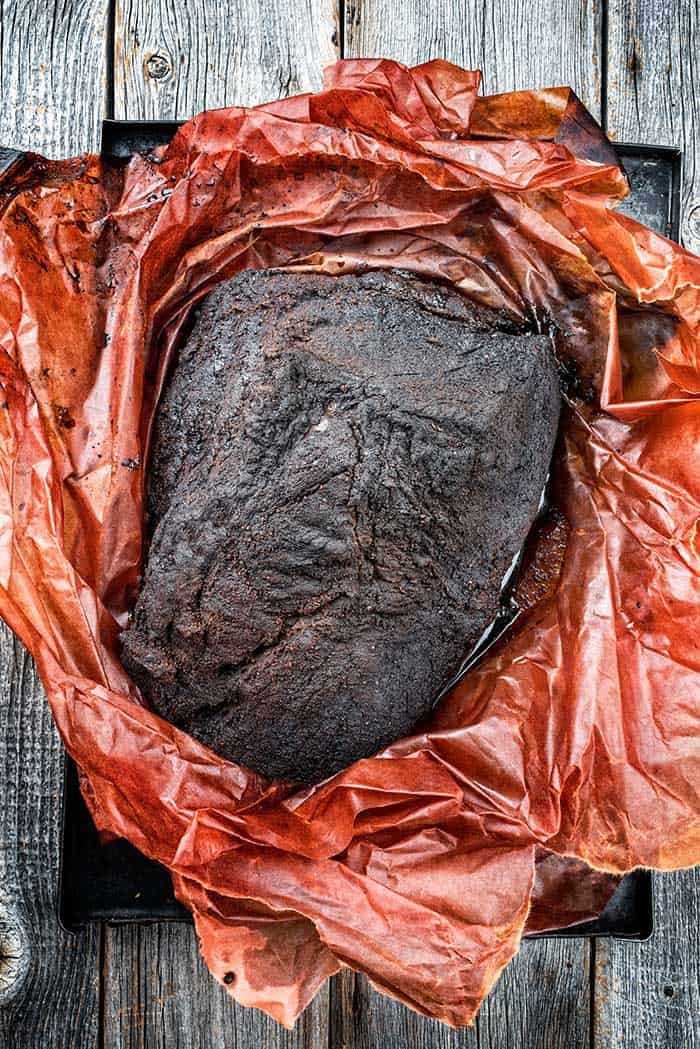
What is the Texas Crutch?
If you’re familiar with any BBQ cooking show or YouTube channel, you’ve probably heard this term thrown around, but you’d be forgiven for not knowing exactly what it is.
In a nutshell, the Texas Crutch method involves keeping your brisket wrapped in aluminum foil while it cooks. It’s particularly useful for long-form cooking like barbecue smoking, whereby we can help to speed up the cooking process.
It’s a technique that has grown in popularity decade-after-decade and is now seen as a fundamental step when smoking competition briskets, as well as in some restaurants.
It’s now become a well-used step for BBQ fans of all cooking levels, and as well as helping to get things moving, it also helps ensure that your brisket retains enough moisture to make it extra juicy, as well as helping the meat get through the dreaded BBQ stall.
And what about that name? My guess is it’s a bit of a joke and soft jibe at it being a ‘crutch’ for pitmasters to fall on if they want to quicken things up around the smoker.
It’s also worth pointing out that it doesn’t have to be aluminum foil. Many people also swear by butcher paper because it allows more ventilation around the brisket. This means that it can still help it retain moisture without running the risk of going soggy. People who swear by this method also point out that you have a much better chance of developing a bark on the brisket using this method.
What Exactly is the Science Behind the Texas Crutch?
The aim here is to create a brisket that is quicker to smoke but, most importantly, is also incredibly tender and juicy.
After all, if it comes out soggy or bland, then what’s the point in any of this?
The problem with low and slow cooking is that the internal temperature of the meat rises first, which in turn pushes the moisture towards the meat’s surface. This means that the moisture and juices at the center of the meat dry out first, leaving you with a dry slab of beef.
What can also happen is that the temperature will stop rising, but the evaporation will continue. This is what’s commonly referred to as ‘The Brisket Stall‘.
Wrapping the meat can help us get around this. It can help to fence the moisture and temperature in, which effectively braises the meat and leaves you with a cut of beautifully tender and juicy beef brisket.
What Temperature to Wrap Brisket?
The key to the perfect brisket here is timing, and the point at which you wrap your brisket will be crucial to the success of your barbecue.
We don’t want to start things off with your brisket already wrapped, but nor do we want to do it too late when the meat is already dry.
We want to wait for two key things. We want a beautiful bark to have formed on top of the brisket, and we also want the brisket’s internal temperature to have reached 150°F (65°C).
It can take a good while for this to happen, so don’t panic and don’t wait by your smoker’s side. It can take a good few hours before your brisket comes close to that 150°F mark.
Quick reminder: If you don’t already have a digital meat thermometer, then I can’t recommend getting one highly enough.
What are the Advantages of Wrapping Brisket?
Using the Texas Crunch can significantly cut down cook time. Allowing you this shortcut through the dreaded ‘stall’ enables us to reach our target temperature quicker without running the risk of the beef drying out.
- Reduces direct exposure to smoke: When your meat is smothered in smoke for hours at a time, its natural flavors can be overpowered. And if your coals or woodchips contain any chemicals or additives, you even risk unpleasant flavors creeping their way into your food. By creating a foil or paper coat, wrapping the brisket can help shield it from harmful chemicals.
- Makes the brisket extra delicious: Smoking allows us to render the fat content in meat, allowing it to permeate through the flesh of the meat and infuse it in rich flavor. Go too far, however, and it’ll quickly dry out. Wrapping it helps lock in the juices for longer.
- The brisket can ‘hold’ its temperature for longer: Many people wrap meat in foil fresh off the smoker to prevent it from cooling down rapidly. This will help ‘hold’ it at target temperature for longer, allowing the juices to enrich the flavors of the meat even further.
- You burn less wood: By speeding up cook time, we don’t need as much fuel. Wood chips can be hard (and expensive!) to source, so it can be great to make a saving. Less time spent burning wood while your meat is just sitting there for those 6 to 10 hours in the stall means less wood burned (and more saved money for you!).
What About the Cons?
- Can spoil bark: Creating a layer of bark on your beef brisket is one of the reasons why we love the delicious beef cut so much. Wrapping it in foil can reduce the chances of developing that delicious layer and instead gives you a wet, sloppy bit of caked-on flesh.
What Should I Wrap Brisket in?
Aluminum Foil
The standard go-to for years has been aluminum foil. It’s cheap, it’s versatile, and it does the job great.
Wrap your brisket in an aluminum foil pouch to give yourself a tender brisket that’s cooked in a shorter time. The only drawback is that you greatly reduce the chance of you getting that beautiful bark on top, but it can be done with practice.
Just be sure to wrap the brisket as tightly and securely as possible. If your foil has too much give, the juices can gather at the bottom and form a pool, creating steam and ruining your meat.
Butcher Paper
This is a relatively recent revelation, but butcher paper gives a bit more ventilation to your brisket, which means that you improve your chances of getting bark and allow a little more smoke in to help improve the flavor.
The only drawback is it can be difficult to get hold of good butcher paper, although I found some here on Amazon (Note: affiliate link).
No Wrapping (The Naked Method)
Yep, we can do it naked… So to speak. You can forego the wrap altogether and cook your brisket exposed.
It will take longer to cook and is more of a challenge to stop from drying out, but you stand a far great chance of developing bark on the top side of the brisket.
![When to Wrap Brisket [BBQ Tip]](https://theonlinegrill.com/wp-content/uploads/2020/02/When-to-wrap-brisket-150x150.jpg)
